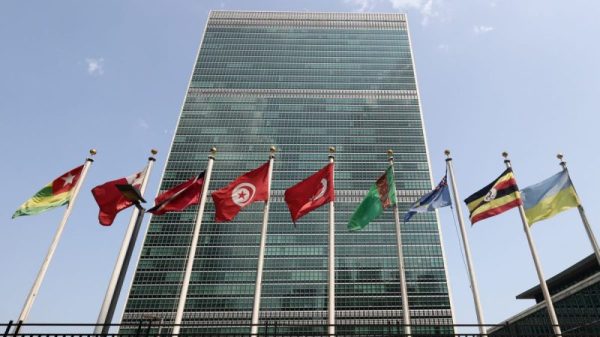Real Estate Market: Pre and Post COVID-19 Bubble Concerns
The real estate sector has always been a rollercoaster ride of booms and busts. Let’s dive into its history. One of the earliest significant events in U.S. real estate sector was the Homestead Act of 1862. This legislation was a game-changer, offering 160 acres of free land to any American citizen willing to settle and farm it for five years. This opportunity led to a mad rush westward, with people from all walks of life staking their claim to a piece of the American dream.
By the end of the 19th century, over 1.6 million homesteads had been distributed, radically transforming the American landscape. However, this massive land rush also led to over-speculation and over-cultivation, which, coupled with severe drought, eventually resulted in the environmental catastrophe known as the Dust Bowl in the 1930s. This event underscored the dangers of rapid, unchecked expansion and the need for sustainable land management practices.
1920s Real Estate Boom: Florida’s Bust in 1926
Fast forward to the 1920s, a decade often remembered for its economic prosperity and cultural dynamism. Real estate was no exception to the era’s exuberance. Florida, in particular, became the epicenter of a real estate boom. Developers and speculators flooded the market, convinced that the good times would never end. People bought and sold properties multiple times in quick succession, with prices skyrocketing to unsustainable levels. However, the bubble burst in 1926, triggered by a combination of natural disasters like hurricanes and the inevitable market correction. This sharp decline in real estate values was one of the early signs of the economic troubles that would culminate in the Great Depression. The lesson from the 1920s real estate boom and bust is clear: markets driven by speculative fervor and unsustainable price increases are bound to face a severe reckoning.
Suburbs Flourish Post-WWII: GI Bill Fuels Growth
The end of World War II ushered in a period of unprecedented economic growth and prosperity. One of the most significant shifts in real estate during this time was the suburban boom. With soldiers returning home and starting families, there was a huge demand for housing. The U.S. government responded with the GI Bill, which provided veterans with low-cost mortgages, making homeownership more accessible than ever before. Suburban developments, like the iconic Levittown, sprang up across the country, offering affordable homes with modern amenities. These suburbs became symbols of the American Dream, promising a better life away from the crowded cities. However, the rapid expansion of suburbs also led to concerns about urban sprawl, the environmental impact of car-dependent communities, and the socio-economic segregation that often accompanied suburbanization. This period highlighted the need for balanced urban planning and the importance of considering long-term sustainability in real estate development.
The 1980s: A Decade of Deregulation and Excess
The 1980s marked another significant era in real estate history. Deregulation and a culture of excess characterized it. The savings and loan industry had been tightly regulated since the Great Depression. However, this industry saw a wave of deregulation in the 1980s. This change allowed for riskier lending practices.
Consequently, this led to a real estate boom. Developers and investors took advantage of easy credit to fund massive projects. Nevertheless, this era of excess came crashing down with the savings and loan crisis. By the end of the decade, over 1,000 savings and loan institutions had failed. This resulted in a costly bailout by the federal government.
The crisis highlighted the dangers of insufficient regulation and oversight in the financial sector. It underscored the need for prudent lending practices. The resolution of the crisis involved massive government intervention and reform. This included the creation of the Resolution Trust Corporation to manage the fallout. Ultimately, it reminded us of the critical role of effective regulatory frameworks in maintaining market stability.
Silicon Valley’s Rise and Fall: The Dot-Com Era
As the new millennium approached, the dot-com boom brought significant changes to the real estate landscape. Tech companies flourished, and real estate in tech hubs like Silicon Valley saw unprecedented demand. Office spaces, residential properties, and even commercial real estate in these areas experienced a dramatic increase in value, driven by the booming tech industry. This period saw a rush to build new office spaces and residential complexes to accommodate the influx of tech workers. However, the bust of 2000-2002 led to a sharp correction in the market. Tech companies went bankrupt, layoffs ensued, and the demand for real estate plummeted. While the market eventually stabilized, the dot-com bust highlighted the volatility of markets tied to specific industries and the dangers of speculative bubbles. It served as a cautionary tale about the importance of diversification and the risks associated with over-reliance on a single sector.
2008 Housing Crisis: Global Recession’s Root
No discussion of real estate history would be complete without mentioning the 2008 financial crisis, often referred to as the Great Recession. The housing bubble that preceded this crisis was fueled by subprime mortgages, risky financial products, and a lack of regulatory oversight. For years, home values had been increasing rapidly. This rise was driven by speculative buying and lax lending standards.
When the bubble finally burst, home values plummeted. Consequently, millions of Americans faced foreclosure. The crisis had far-reaching consequences. It led to the collapse of major financial institutions and a severe global economic downturn.
Governments around the world were forced to intervene with massive bailout packages. These measures were taken to stabilize the financial system. The aftermath of the Great Recession saw a wave of regulatory reforms aimed at preventing a recurrence. These reforms included stricter lending standards and more robust oversight of financial institutions. However, the crisis also left lasting scars on the global real estate market. It underscored the need for vigilance and prudence in real estate investment.
COVID-19’s Impact: Real Estate Bubble Fears
Today, some analysts warn that we might be in the midst of another real estate bubble. The COVID-19 pandemic has had a profound impact on the real estate market. Low interest rates, coupled with a surge in demand for housing, have driven property prices to record highs in many regions. The remote work trend has shifted demand to suburban and rural areas, reminiscent of the post-war suburban boom. People are seeking larger homes with more space, leading to increased competition and higher prices. However, the current market is also more resilient, with stricter lending practices and better oversight in place to prevent a repeat of the past. While there are concerns about affordability and market sustainability, the lessons from previous booms and busts have led to more cautious and informed decision-making among investors and policymakers.
Real Estate Cycles: Learning from History
So, what can we learn from history? For one, real estate markets are inherently cyclical. Booms driven by speculation, easy credit, or external factors tend to end in busts. The key to navigating these cycles lies in understanding the underlying factors driving the market and recognizing the signs of an impending downturn. Regulatory frameworks and economic fundamentals play crucial roles in mitigating these cycles, but they can’t eliminate them entirely. Investors and homeowners need to remain vigilant and informed, making decisions based on sound economic principles rather than speculative fervor. By learning from past mistakes and successes, we can better predict and prepare for future market fluctuations.
The post Real Estate Market: Pre and Post COVID-19 Bubble Concerns appeared first on FinanceBrokerage.

































